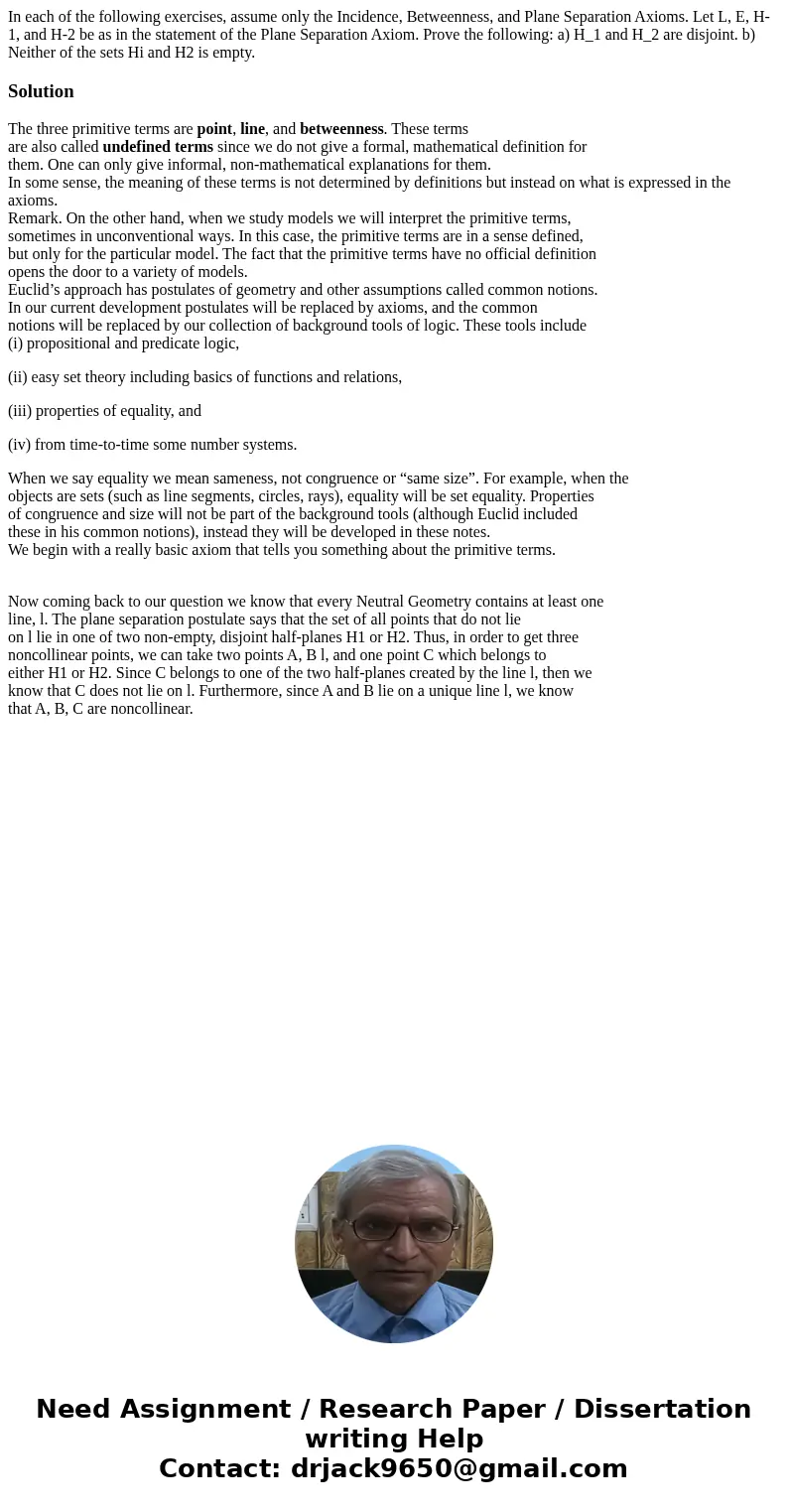In each of the following exercises assume only the Incidence
Solution
The three primitive terms are point, line, and betweenness. These terms
are also called undefined terms since we do not give a formal, mathematical definition for
them. One can only give informal, non-mathematical explanations for them.
In some sense, the meaning of these terms is not determined by definitions but instead on what is expressed in the axioms.
Remark. On the other hand, when we study models we will interpret the primitive terms,
sometimes in unconventional ways. In this case, the primitive terms are in a sense defined,
but only for the particular model. The fact that the primitive terms have no official definition
opens the door to a variety of models.
Euclid’s approach has postulates of geometry and other assumptions called common notions.
In our current development postulates will be replaced by axioms, and the common
notions will be replaced by our collection of background tools of logic. These tools include
(i) propositional and predicate logic,
(ii) easy set theory including basics of functions and relations,
(iii) properties of equality, and
(iv) from time-to-time some number systems.
When we say equality we mean sameness, not congruence or “same size”. For example, when the
objects are sets (such as line segments, circles, rays), equality will be set equality. Properties
of congruence and size will not be part of the background tools (although Euclid included
these in his common notions), instead they will be developed in these notes.
We begin with a really basic axiom that tells you something about the primitive terms.
Now coming back to our question we know that every Neutral Geometry contains at least one
line, l. The plane separation postulate says that the set of all points that do not lie
on l lie in one of two non-empty, disjoint half-planes H1 or H2. Thus, in order to get three
noncollinear points, we can take two points A, B l, and one point C which belongs to
either H1 or H2. Since C belongs to one of the two half-planes created by the line l, then we
know that C does not lie on l. Furthermore, since A and B lie on a unique line l, we know
that A, B, C are noncollinear.

 Homework Sourse
Homework Sourse